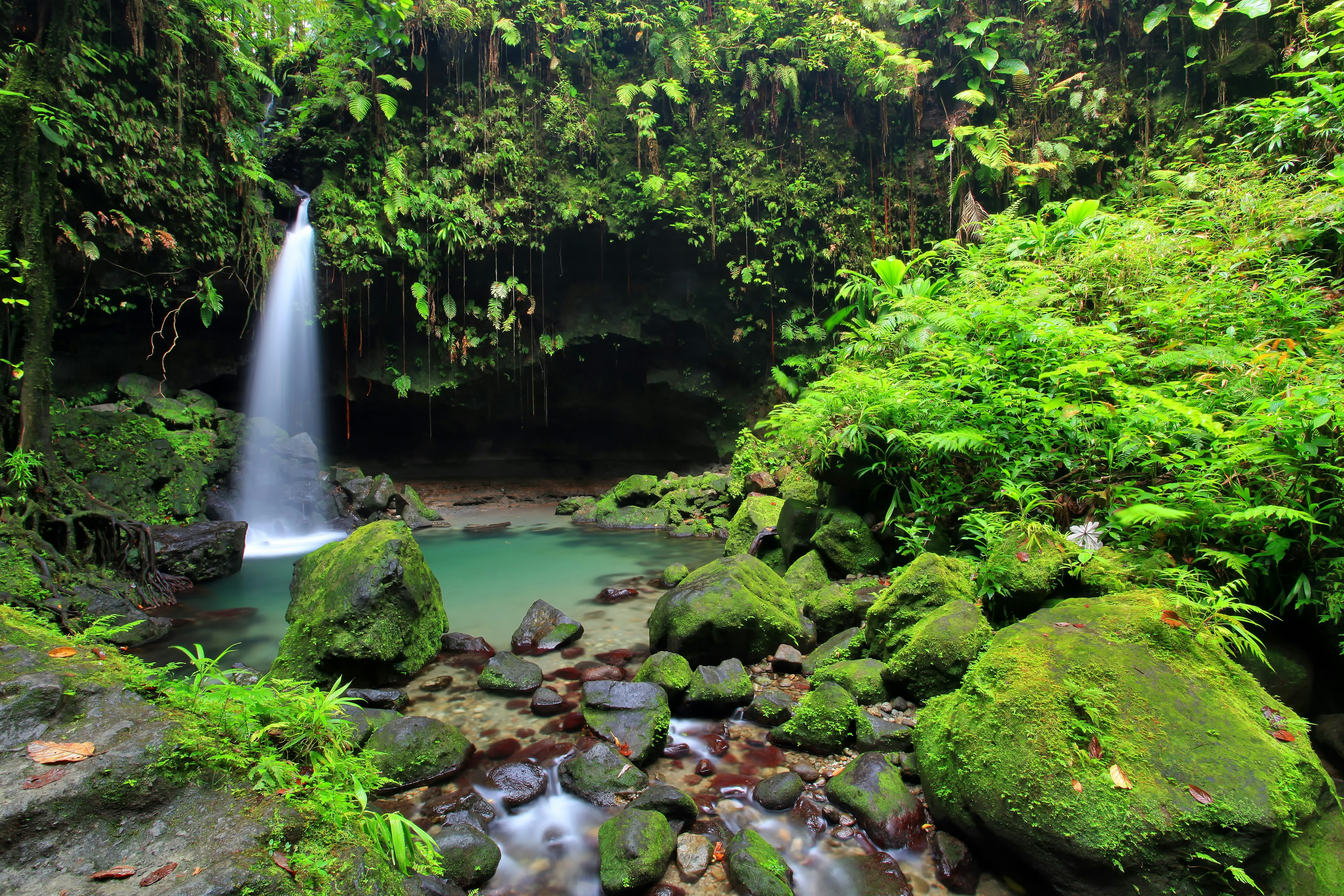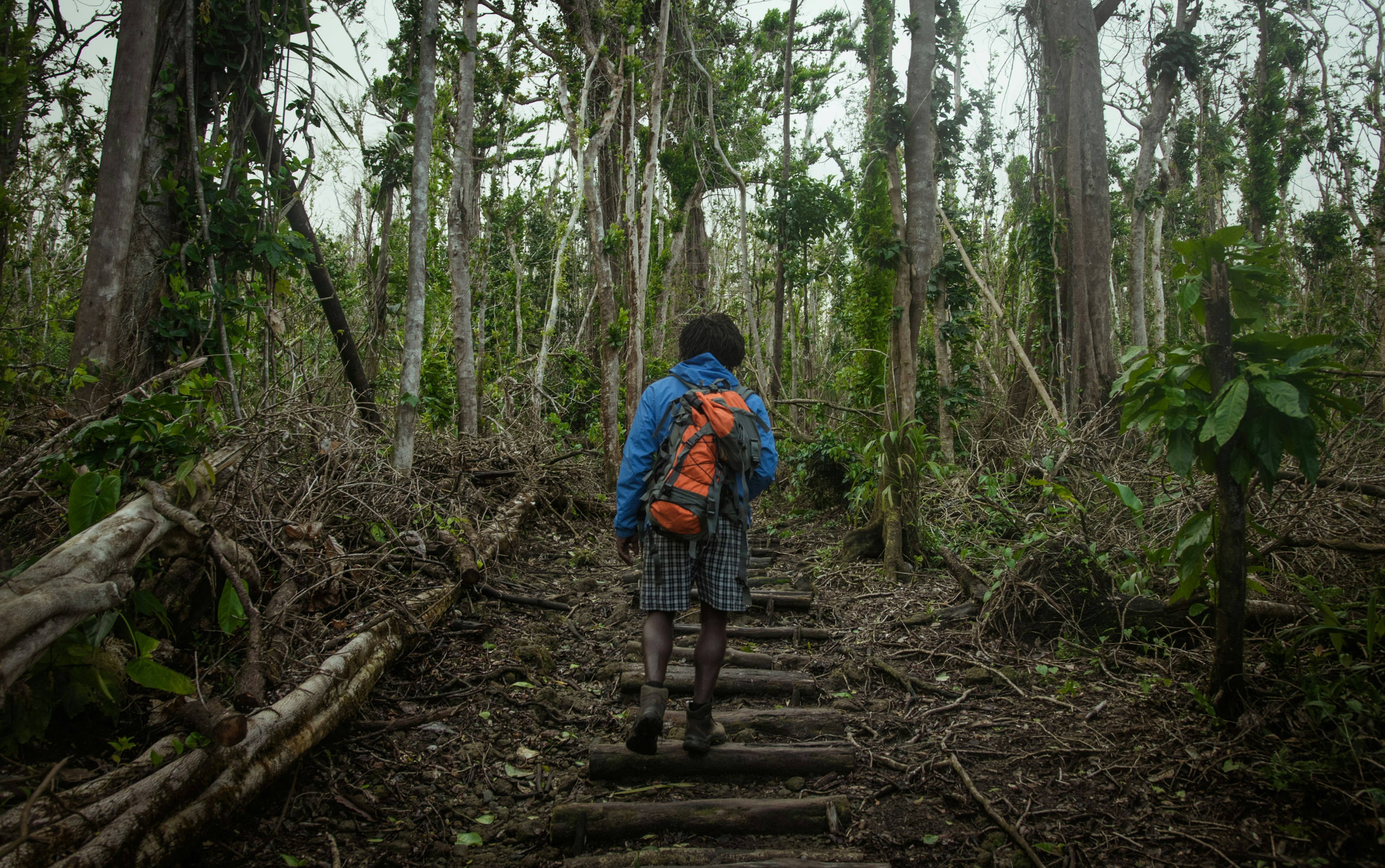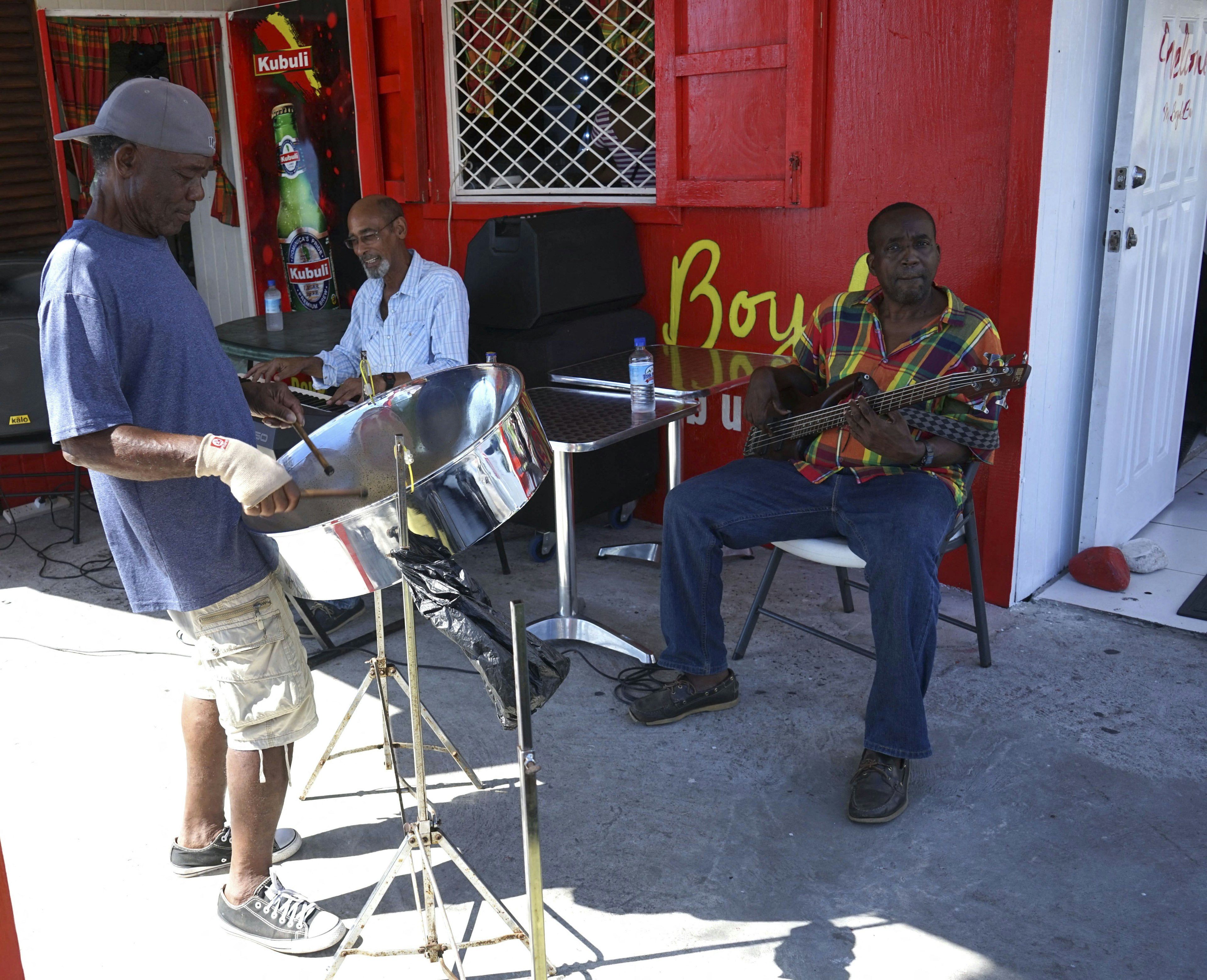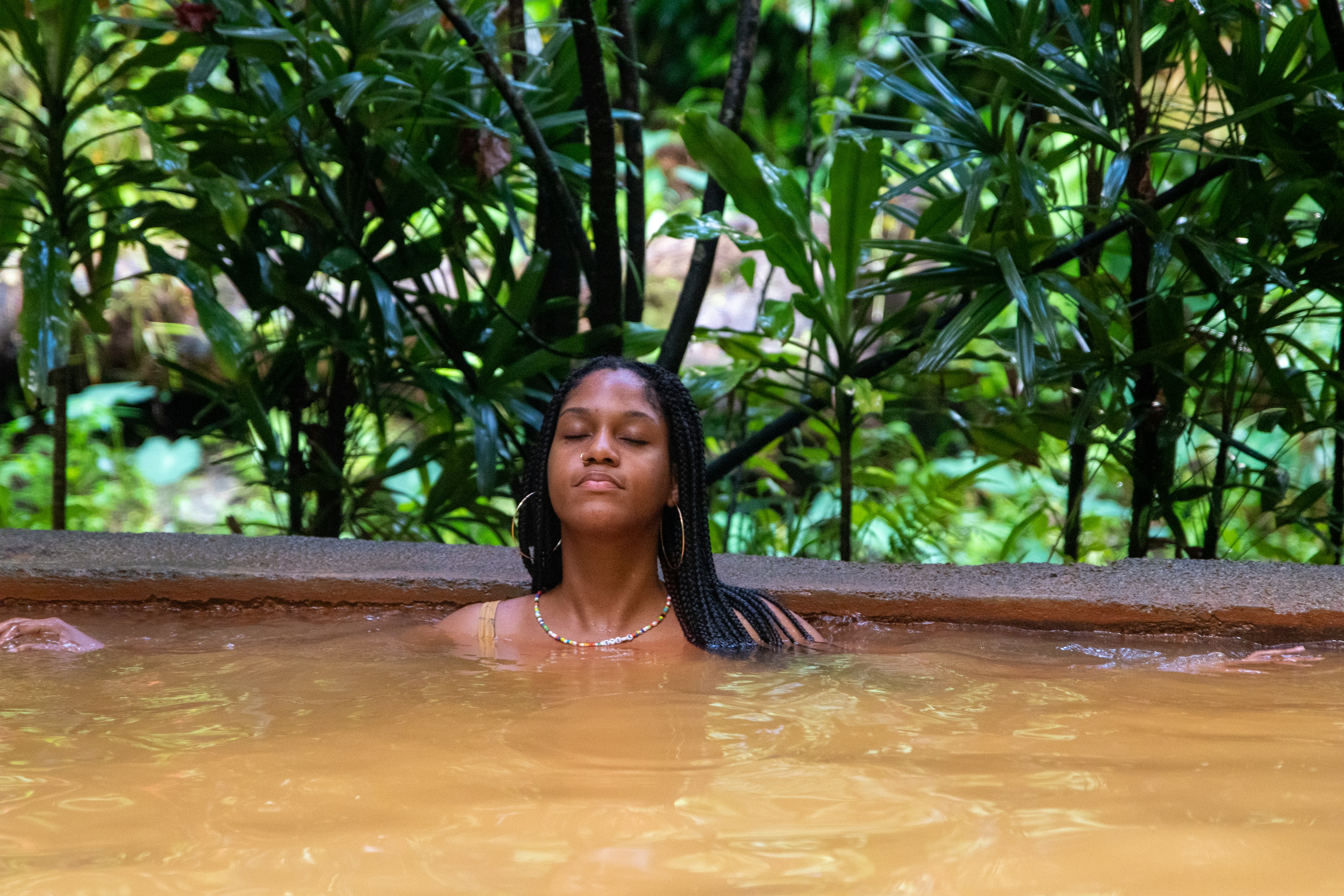En Dominica, una de las pocas islas caribeñas donde la playa es la atracción menos encantadora.
¿Por qué realmente se visita este paraíso tropical? Las experiencias al aire libre naturales, que son abundantes aquí. Dominica está cubierta de vegetación esmeralda y salpicada generosamente con fuentes termales, cascadas, gargantas, volcanes y arena negra, lo que te permite acercarte a la naturaleza en su estado más puro e idílico.
Al fin y al cabo, ¿en qué otro lugar encontrarás 365 ríos?
¿Cuándo debería visitar Dominica?
La llamada Isla de la Naturaleza abarca 290 millas cuadradas (751 km cuadrados) de frondosos bosques, profundas gargantas, imponentes montañas y fuentes termales naturales, lo que suma un parque de juegos óptimo para ecoturistas y aventureros.
Este terreno abrupto ofrece oportunidades de exploración durante todo el año. La elección de la fecha de visita depende de tus preferencias y del tipo de experiencia que desees. Como en la mayoría de las islas caribeñas, realmente nunca hay un mal momento para visitar.
Dominica tiene dos temporadas principales: la temporada seca, que va de diciembre a mayo; y la temporada húmeda (lluviosa), de junio a noviembre. La temporada húmeda también es temporada de huracanes, así que espera lluvias intermitentes y posiblemente clima tormentoso.
(El Huracán María, categoría 5, golpeó la isla en 2017). Exceptuando una lluvia continua, la temporada lluviosa generalmente permite actividades al aire libre también.
Dominica cuenta con aguas cálidas durante todo el año, ideales para explorar la rica vida marina de la isla mediante buceo o esnórquel. Si lo tuyo es el senderismo, la estación seca es tu momento para brillar; solo asegúrate de salir temprano antes de que las temperaturas abrasadoras del mediodía se instalen.
Si la exploración cultural es más tu estilo, considera un escapada durante el Carnaval, conocido localmente como “Mas Dominik.” Esta colorida celebración tiene lugar en los días previos al Miércoles de Ceniza, generalmente en febrero o principios de marzo. Otro evento importante en el calendario es el Festival Mundial de Música Criolla en octubre, que rinde homenaje a la música dominicana extraordinaria y alberga otros géneros populares.

¿Cuánto tiempo debo pasar en Dominica?
Dominica es el escape perfecto si buscas relajación y renovación. Los visitantes deberían quedarse una semana o más para aprovechar al máximo su tiempo en la isla y dejar que el estrés realmente desaparezca.
¿Es fácil llegar y moverse por Dominica?
American Airlines ofrece servicio diario directo desde su centro en Miami, desde donde los vuelos alcanzan ciudades a lo largo de EE. UU. y el mundo.
Douglas-Charles (antes conocido como Aeropuerto Melville Hall) es el más grande de los dos aeropuertos de Dominica, y está a poco más de una hora en coche de la capital, Roseau. El Aeropuerto de Canefield, que tiene servicio de avión de hélice hacia otras islas caribeñas, se encuentra a 15 minutos del centro.
(Accessible por el servicio de ferry Express des Îles desde Guadalupe, Martinica y Santa Lucía también). Al llegar, tendrás varias opciones para moverte por la isla. Hay taxis estacionados afuera de ambos aeropuertos y en varios puntos alrededor de la capital. Minibuses de propiedad privada, identificados con la letra “H,” circulan por varias rutas en toda la isla.
Puedes detener uno en el camino, dependiendo del área (las tarifas comienzan desde EC$1.50 / US$.50). También existe la opción de alquilar un vehículo, para lo cual necesitarás adquirir un permiso por EC$30 (US$11).
Cosas principales para hacer en Dominica

Embark on an extensive stroll across the entire island
Traversing the whole island on the Waitukubuli National Trail is a possibility. Among Caribbean long-distance hiking paths, this one stands out due to its impressive 115-mile (185km) stretch from end to end, commencing in the southern village of Scotts Head and concluding at Cabrits National Park in the north.
The trail, called Waitukubuli (the Kalinago Indigenous term for Dominica), snakes through dense rainforests and resounding waterfalls such as Trafalgar, with numerous pauses in bustling local communities along the journey.
Though acknowledged as a strenuous excursion, undertaking the entire trail demands a two-week dedication. Still, because it’s conveniently divided into 14 sections, you can tailor your journey based on duration and challenge level.
Certain portions are ideal for a leisurely family walk, while others cater to the more seasoned adventurer due to their complexity. For those who decide to embrace the full endeavor, it’s a remarkably immersive experience that delves deeply into the essence of Dominican traditions.
Unwind at one of the island’s natural sanctuaries
Wotten Waven, a diminutive village concealed in the Roseau Valley, hosts a gathering of natural sanctuaries. These rustic, open-air enclaves could be precisely what you seek for relaxation.
In Tikwen Glocho (meaning “little corner of hot water”), you’ll discover a garden refuge featuring adjacent cool springs and sizeable stone pools filled with healing thermal waters, perfect for a relaxing soak. Tia’s Hot Spa offers three expansive outdoor pools alongside two enclosed bamboo hut pools for privacy.
Screw’s Spa, located on the fringes of Wotten Waven, serves as a picturesque getaway overlooking a river, with various pools of different depths and temperatures linked by man-made cascading waterfalls.

Drift along the prominent Indian River among Dominica’s 365 rivers
Floating down Dominica’s celebrated Indian River offers a tranquil route to immerse oneself in the island’s pristine beauty.
This wildlife-rich passage is bordered by dense foliage and crowned by a sparse canopy of tall mangroves, with the intertwining roots of bwa mang trees curling around the marshy riverbank.
Film enthusiasts might recognize Tia Dalma’s Shack, a frequent stop on this journey, from the Pirates of the Caribbean series. Be sure to try the distinctive Dynamite drink, an intense blend of local cask rum, gooseberry, passion fruit, lime and guineps.
Unveil Dominica’s untamed essence at Morne Trois Pitons
Within Morne Trois Pitons National Park, witness the awe-inspiring Boiling Lake, originating from a volcanic crater, now recognized as one of the planet’s largest hyper-heated bodies of water.
Nearby, in the dramatically named Valley of Desolation, steaming fumaroles, venting steam, and thermal springs present an almost otherworldly landscape. Explorers of the area will also encounter Ti Tou Gorge, a narrow canyon filled with crystal-clear water.
Overseeing the park is its pinnacle, the formidable 4403ft (1342m) Morne Trois Pitons, with its peak offering uninterrupted vistas of adjacent peaks such as Morne Micotrin, Morne Watt, and Morne Anglais.

Dominica: My most loved activity
There exists in Dominica an unspoiled, primal charm that indicates its essence will endure even as it garners tourist attention. The World Creole Music Festival, a lively three-day celebration of captivating island tunes, exemplifies my preferred event on the island.
Admiration for the legendary WCK Band, a pillar of both Dominican culture and Bouyon music, was my childhood obsession. My dance movements are involuntary whenever classics like ”Band Wagon Train,” “Balance Batty,” or ”Met Veye” play. Experiencing a performance at WCMF in Dominica? Simply electrifying.
Dominica: Financial planning advice
Visitors hailing from the US, Canada, the UK, and Europe find a beneficial exchange rate when switching their currency to Eastern Caribbean dollars.
-
Lodging: EC$270–540 (US$100–200) per evening
-
Dining establishments: EC$30–200 (US$11–74)
-
Commute by public means: EC$1.50–12.50 (US$.50–4.50)
-
Exclusive cab service: EC$80–250 (US$30–92)
-
Rum cocktail glass: EC$12–20 (US$4.50–7.50)
-
A cup of coffee or cocoa beverage: EC$5.40–13.50 (US$2–5)
Additional advice for enjoying Dominica

Opt for dark swimwear in heated waters
Visiting a sulfur pool? Be mindful that light-colored swimsuits and shorts are prone to discoloration. It’s also recommended to take off jewelry before soaking in the pool to prevent metal damage.
Keep cash on hand
Not every vendor accepts card payments, and the chances of encountering Apple Pay are slim. Thus, carrying some cash – in either local EC or US dollars – ensures smooth purchases, particularly at smaller venues.
Employ a guide for optimal exploration of nature
Certain portions of the Waitukubuli National Trail pose more challenge and risk than others. Employ a well-informed guide – you may seek referrals from the Forestry, Wildlife and Parks Division – and refrain from trekking alone.
Your chosen trail might necessitate a hiking permit, obtainable as well through the forestry agency. As a further safety measure, inform the hosts at your stay about your hiking intentions prior to departure.
